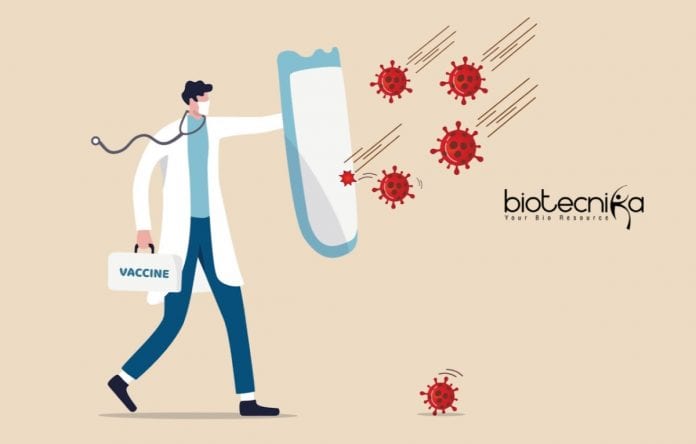Analysis of immune response to SARS-CoV-2
Epidemiologists around the world are trying to predict how the coronavirus pandemic will unfold until a vaccine is available as scientists are racing to develop a vaccine to protect against COVID-19 infection. However, whether a substantial and lasting response to SARS-CoV-2 can be mounted by the immune system is still unresolved.
By providing the first cellular immunology data to help guide social distancing recommendations, at La Jolla Institute for Immunology, a collaboration between the labs of Alessandro Sette, Dr. Biol. Sci. and Shane Crotty, Ph.D., a is starting to fill in this massive knowledge gap.
In a group of 20 adults who had recovered from COVID-19, a robust antiviral immune response to SARS-CoV-2 is documented in the study, which was published in today’s online edition of Cell. The study’s findings dispelled fears that the virus may elude ongoing efforts to create an effective vaccine as it showed that the body’s immune system is able to recognize SARS-CoV-2 in many ways.
At the Center for Infectious Disease and Vaccine Research, Sette, a professor, says, “We would have been concerned if we had seen only marginal immune responses. Instead, a very robust T cell response against the
target of most ongoing COVID-19 efforts, the spike protein, as well as other viral proteins were seen in the study. For vaccine development, these findings are really good news.”Another professor there, Crotty says, “Understanding the immune response to the virus is connected to all efforts to predict the best vaccine candidates and fine-tune pandemic control measures. There were many concerns regarding reports about people getting re-infected and that COVID-19 doesn’t induce immunity, but those concerns are put to rest through this study, now knowing that the average person makes a solid immune response.”
In an earlier study, to predict which fragments of SARS-CoV-2 are capable of activating human T cells, Sette and his team had used bioinformatics tools. In this newest research, the scientists then tested if the predicted protein fragments, or so-called peptides, from the virus itself, were recognized by the T cells isolated from adults who had recovered from COVID-19 without major problems. The peptides were pooled into two big groups by the scientists. All proteins in the viral genome apart from SARS-CoV-2’s “spike” protein were included in the first so-called mega-pool. The spike protein that dots the surface of the virus was specifically focused in the second mega-pool.
Sette says, “Since the virus can do some very unusual things in some people, to provide a solid benchmark for what a normal immune response looks like, we specifically chose to study people who had a normal disease course and didn’t require hospitalization.”
It was found that all COVID-19 patients had the response that helps antibody production, the T cell response, a solid CD4. Virus-specific CD8, or “killer,” T cells, which eliminate virus-infected cells was produced in almost all patients.
These results provide an important baseline against which individuals’ immune responses can be compared although they don’t preclude that the immune response to SARS-CoV-2 may be detrimental.
Earlier, blood samples were collected between 2015 and 2018, the team also looked at the T cell response in those samples. Although these individuals had never been exposed to SARS-CoV-2, many of them had significant T cell reactivity against SARS-CoV-2. The cross-reactivity could be explained as everybody has almost certainly seen at least three of the four common cold coronaviruses.
Yet, it is still unclear if the reason why some people or geographical locations are hit harder by COVID-19 could be because of the observed cross-reactivity providing at least some level of preexisting immunity to SARS-CoV-2
Crotty says, “On the overall course of the pandemic, any degree of cross-reactive coronavirus immunity could have a very substantial impact given the severity of the ongoing COVID-19 pandemic. Trying to scope out how severely COVID-19 will affect communities in the coming months, this is a key detail to be considered for epidemiologists.”
The Bill and Melinda Gates Foundation, the NIH NIAID (AI142742, AI135078, AI007036, AI00738475N9301900065, and U19 AI118626), internal LJI institutional funds, the Johnathan and Mary Tu Foundation funded this work.






























